
Welcoming a new furry Labrador friend into your household is an exciting yet sometimes challenging experience. Many new Labrador owners are often faced with the issue of a crying puppy, which can be a sign of separation anxiety or the stress of adapting to a new environment. In this guide, we will discuss various techniques and approaches to help soothe a Labrador puppy’s distress and assist them in settling in comfortably. When a Labrador puppy is taken away from their mom and siblings, it is natural for them to feel anxious and vocalize their emotions through crying or whining. This is especially common during the initial stages of transitioning to a new home. Understanding the reasons behind their crying can aid in effectively addressing their needs and providing them with a sense of security amidst the unfamiliar environment. It is crucial to approach a crying Labrador puppy with patience and compassion, as a supportive and calm atmosphere can greatly benefit their emotional well-being. There are practical strategies that can be utilized to alleviate a crying Labrador puppy’s anxiety, such as crate training, setting a consistent routine, and using positive reinforcement. In the upcoming sections, we will explore these methods in more depth, offering advice on how to implement them effectively to help your puppy adapt to their new surroundings and reduce their urge to cry for comfort and companionship.

Why Do Puppies Whimper During the Night? New puppies whimper at night for a variety of reasons, such as hunger, discomfort from a full bladder, or feeling nervous and isolated. As they mature, they might also whimper to seek attention if they’ve learned that their cries attract notice in the past. Puppy Refuses to Sleep Unless Near Me! Some puppies find it difficult to sleep unless they are near their owners. They prefer the warmth and closeness of human companionship, especially during their initial days and weeks in a new environment. This behavior is common and comes from a puppy’s natural inclination to stick close to their family for security and reassurance. To help your puppy become more at ease and eventually sleep independently, you can start off by placing their crate or enclosure close to your bed. This way, they can see you and feel your presence. You can also try offering your hand through the bars or letting them smell a piece of your clothing to provide comfort. Allowing a Puppy to Sleep on Its Own While it may be enticing to always share a bed with your puppy or let them sleep on your bed, it is crucial for them to learn how to sleep independently in due course. To make the transition smoother, gradually move your puppy’s crate farther away from your bed. This aids them in getting accustomed to sleeping without you close by. Make sure their sleeping area is cozy, warm, and secure. Provide them with a soft bed or blanket, their preferred toys, and maybe an object that carries your scent to reassure them at night. Remember, consistency and patience are essential in successfully assisting your Labrador puppy in sleeping on their own.
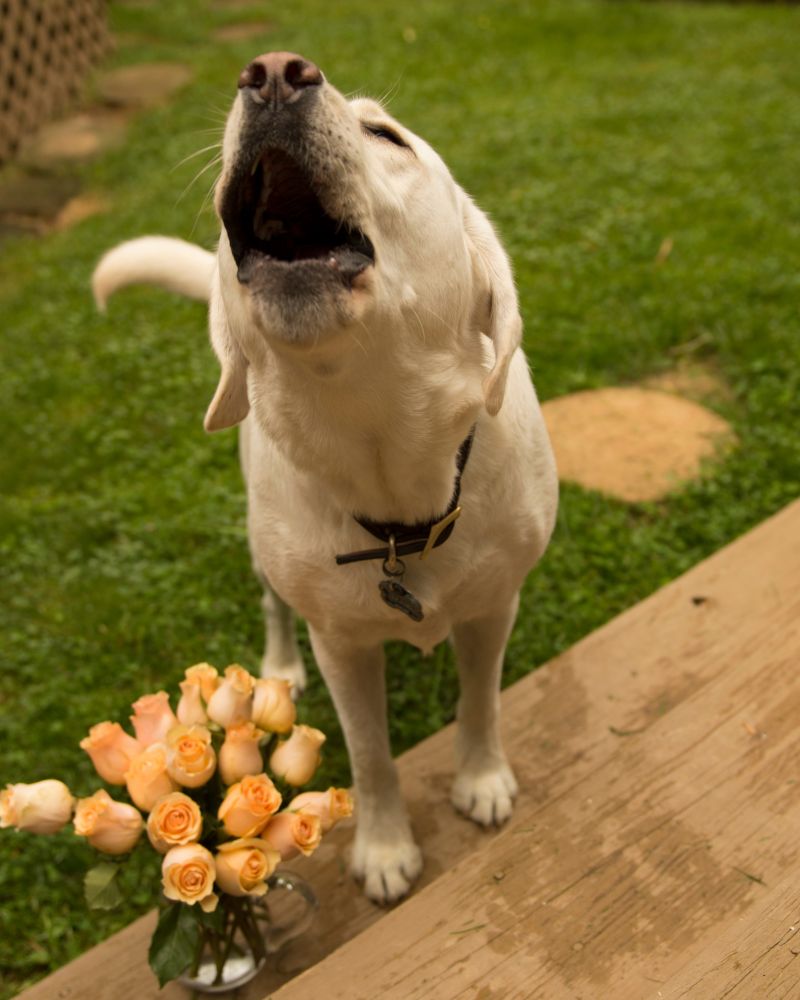
In dealing with a sobbing Labrador puppy during the night, it’s crucial to address their needs rather than letting them cry it out. Understanding why they’re crying – whether due to loneliness, hunger, or needing to go potty – is key to providing comfort and support ( source ). Ignoring their cries can prolong the situation and lead to stress for both you and your furry friend. Instead, offer reassurance, meet their needs promptly, and establish a consistent routine that works for you and your new companion. With time, your puppy will learn to settle down and sleep through the night with fewer interruptions as they adjust to their new surroundings. There’s no set time frame for how long a Labrador puppy might cry at night, as it varies from pup to pup and typically decreases as they become more accustomed to their environment ( source ). Most puppies take around 3 to 4 days to acclimate and feel more at ease in their new home. Your puppy may cry for a few minutes to an hour at night, depending on the reason for their distress and how quickly you attend to their needs. Establishing a predictable routine and providing comfort consistently can help your puppy feel secure and reduce their nighttime crying episodes. Here are some suggestions to help your Labrador puppy settle down at night: – Designate a specific sleeping area for your puppy that is quiet and free from disturbances. – Take your puppy out for a final bathroom break before bedtime to prevent any issues overnight ( source ). – Offer comforting items like a cozy blanket or a toy with your scent on it. – Follow a regular feeding schedule, making sure your puppy is fed at least two hours before bedtime to avoid hunger-related cries. By following these steps and tending to your puppy’s needs, you can minimize their nighttime crying and create a peaceful sleep environment for both you and your Labrador companion. As for when puppies start sleeping through the night, there’s no exact timeline. It varies based on the individual puppy and how well they adjust to their new routine and surroundings.
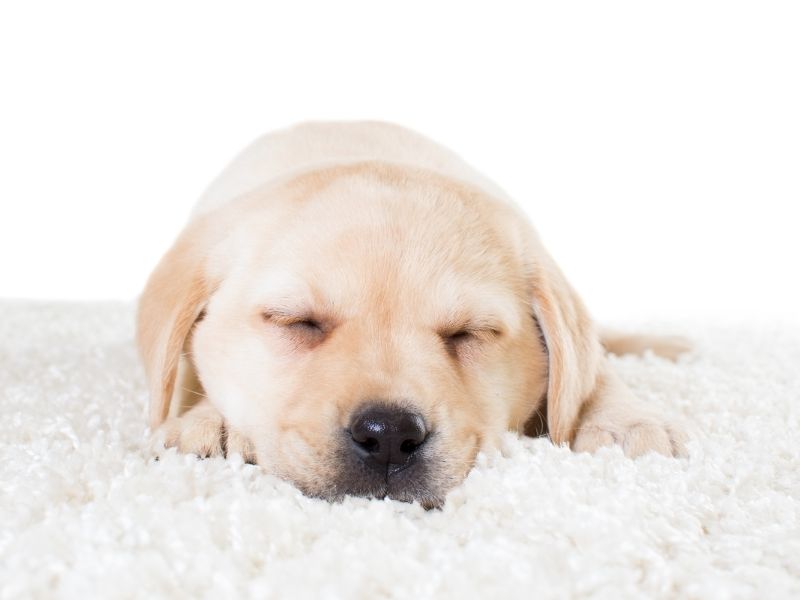
Most puppies can start sleeping through the night around 16 weeks old, but it’s important to remember that each puppy is different when it comes to establishing a sleep routine. To set your Labrador puppy up for a happy bedtime, create a cozy sleeping area with a good dog crate, a comfy bed, a warm blanket, and a favorite toy. It’s also crucial to teach your puppy to be comfortable on their own. Give them alone time in a room after they’ve gone to the bathroom, gradually getting them used to being by themselves. Puppies typically sleep longer than adult dogs, with around 18-20 hours a day of sleep broken up into shorter periods, usually settling down for the night between 6 to 10 hours. When it comes to closing a puppy crate at night, it can help create a den-like atmosphere that makes your puppy feel safe and secure. However, if your Labrador is anxious or cries when the crate is closed, they may need more crate training or having their crate or bed near your bed for reassurance. To stop a puppy from crying during the day, focus on teaching them to be comfortable alone and engaging them with activities to distract them. Gradually increasing distance when they are occupied can help build their independence, while establishing a potty schedule can prevent crying due to the need to go to the bathroom. Address any other reasons for crying, such as hunger or pain, by ensuring your puppy has regular meals and vet check-ups. Using these strategies consistently can help reduce crying behavior and create a more contented puppy.
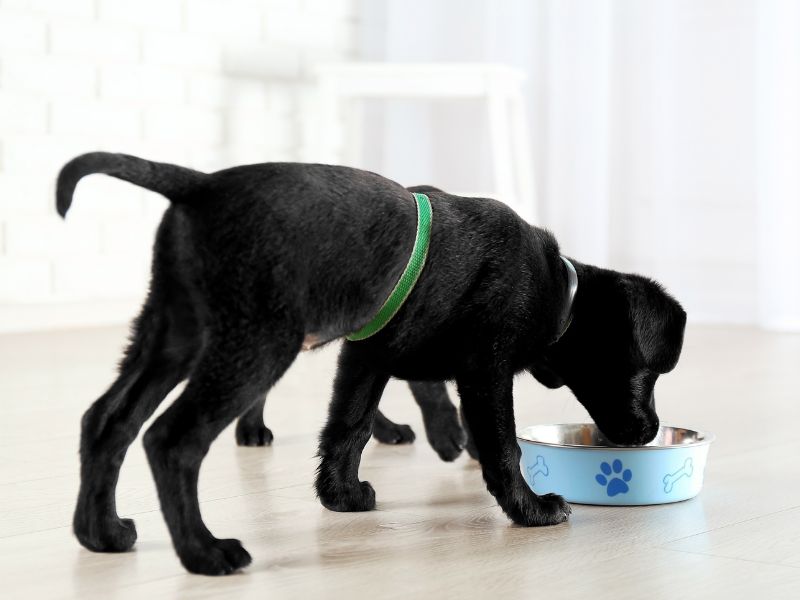
Introducing your Labrador puppy to the crate in a positive and gradual way is crucial. Begin by placing their food and treats inside the crate, allowing them to go in and out freely. This will help your puppy associate the crate with positive experiences and make it a cozy and inviting space. Make sure the crate is the right size for your puppy, providing enough room for them to move around comfortably. A crate that is too small can cause distress and lead to crying. Encouraging your puppy to take naps in the crate during the day is beneficial. This will help them feel at ease and familiar with the crate. Increase the time your puppy spends in the crate gradually and reward them for being quiet. This will teach them that being quiet in the crate leads to being let out, reducing their crying. Once your puppy is comfortable in the crate, start leaving the room while they are inside. Begin with short periods and gradually increase the time. This will help your puppy adjust to being alone in the crate. If they cry, wait until they are calm before letting them out. This will teach them that crying does not result in being released from the crate. Make sure your Labrador puppy gets plenty of exercise and interaction outside of the crate. A tired and happy puppy is more likely to settle in the crate without crying. When crate training a Labrador puppy, it is important to consider how long to let them cry in the crate. The ideal time may vary depending on the intensity of the crying and how well they have adapted to the crate. Crate training a puppy at night requires patience and consistency. Make sure they have had a chance to relieve themselves before bedtime and provide comfort with a blanket or toy. Gradually increase the time they spend in the crate overnight and reward them for being quiet. With time and practice, your puppy will learn to settle in the crate without crying.
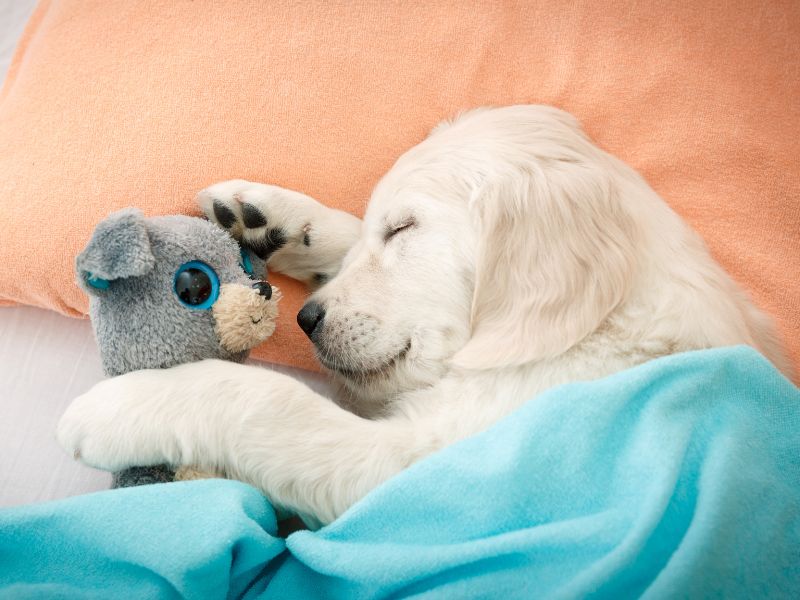
Teaching puppies to be comfortable when left alone is crucial for their development and well-being. To address learned crying in puppies and help them become more independent, follow these tips: Start by leaving your puppy alone for short periods and gradually increase the time as they become more comfortable. Provide engaging toys or puzzle feeders to keep them occupied while alone, making the experience more enjoyable. Avoid making a big fuss when leaving or returning to prevent separation anxiety and teach your puppy that being alone is normal. Create a safe and secure environment for your puppy when they are alone, such as a designated area with their bedding, toys, and water. Reward calm and quiet behavior when your puppy is alone, reinforcing positive habits and helping them feel at ease in your absence. By implementing these strategies and giving your puppy time to adjust, you can help them overcome their fear of being alone and reduce instances of crying or whining. Remember, patience and consistency are key when teaching puppies to be independent and confident.

Labrador puppies must learn how to be comfortable alone to prevent separation anxiety. Here are some tips for helping your puppy adjust to being alone: – Start with short periods and gradually increase alone time – Create a safe space for them – Provide toys or chew items – Practice alone time during feeding or nap times – Address crying and crate training To help your puppy stop whimpering at night in their crate, consider the following tips: – Ensure they get enough exercise during the day – Keep the crate near your bed for comfort – Make the crate cozy with soft bedding – Consider using puppy sleep aids – Stay consistent with crate training By following these tips and understanding your puppy’s needs, you can create a peaceful environment for your Labrador puppy to rest at night. Remember to reward silence in the day to crate train effectively.
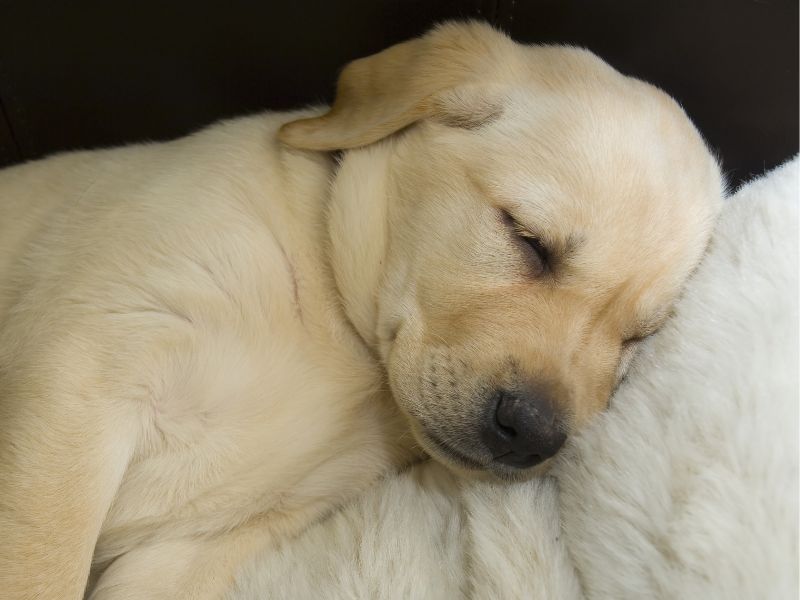
A helpful tip to stop your labrador puppy from crying in their crate is to train them during the daytime. By rewarding good behavior during the day, you can encourage a quieter, more peaceful night for your puppy. Here are steps to help you reward your puppy’s silence while crate training during the day: 1. Create a welcoming crate environment: Make the crate cozy by adding a soft blanket or bed. Place the crate in a family room to prevent your puppy from feeling isolated. Consider leaving the door open or taking it off to make the crate inviting. 2. Establish a routine: Develop a daily schedule that includes playtime, bathroom breaks, and crate time. Feed your puppy meals and treats inside the crate to create positive associations. 3. Reward silence and ignore whining: Give treats or praise when your puppy remains quiet in the crate. Ignore any whining or crying, and only respond when they are calm. This teaches your puppy that quiet behavior is rewarded. 4. Increase crate time gradually: Start with short periods in the crate and gradually extend the time. This helps your puppy get used to the crate and reduces night-time crying. 5. Monitor your puppy: Use a camera to observe your puppy’s behavior in the crate. This allows you to address any issues and reinforce positive behavior in real-time. Following these steps can lead to a successful crate training experience for your labrador puppy. Remember, patience and consistency are key to helping your puppy feel comfortable and secure in their crate.
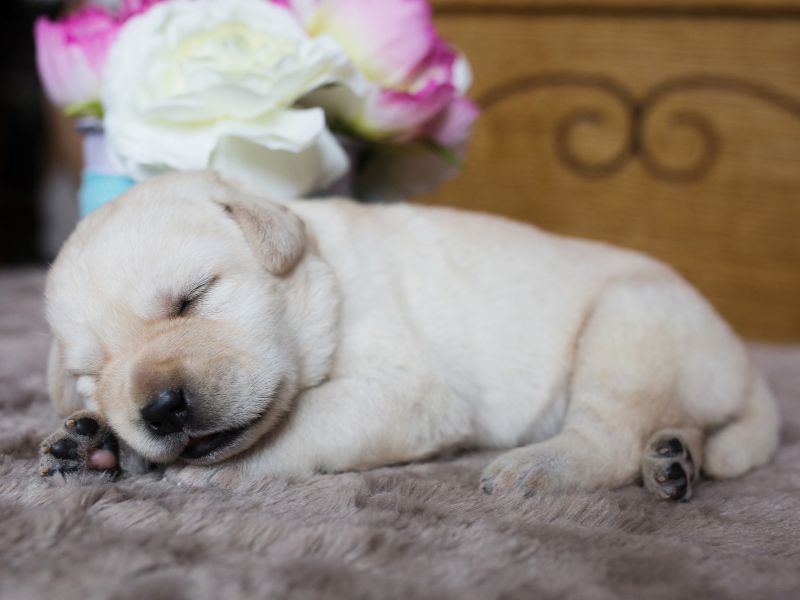
Labrador puppies often cry and whine, especially when they are in a new environment. Although it may be frustrating for the owner, it’s important to remember that the puppy is just trying to adjust. There are ways to help the puppy stop crying in a gentle manner. One way to comfort a crying labrador puppy is to place their crate or bed near your own bed. Being able to smell and hear you can help the puppy feel more secure. If they get upset, you can soothe them by placing your hand near them, which can help calm them down. Providing a warm and cozy sleeping area for the puppy can also help. You can heat a towel in the microwave and place it in their crate or pen to provide comfort. It’s crucial to address the issue and show the puppy comfort, instead of ignoring them in hopes they will stop crying on their own. Remaining calm and gentle is essential, as the puppy can pick up on your demeanor. Comfort and reassurance can help the puppy feel more at ease in their new surroundings. If your labrador puppy is crying, especially at night, there are ways to help them feel more comfortable and reduce their distress. Bringing their crate or bed close to your own bed, providing distractions and activities, and creating a cozy sleep space can all help. If the crying persists, seeking advice from a professional may be necessary to address any underlying issues causing the distress.


